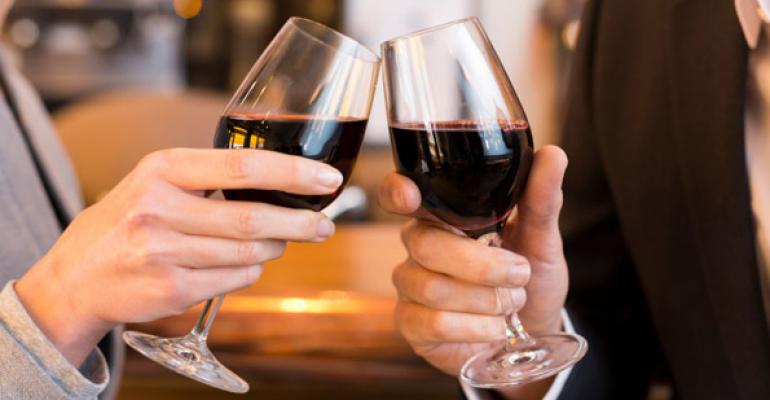Wine sales may be a victim of the category’s success, according to a recent report from Technomic.
Wine consumption in the U.S. has steadily risen in the last two decades, from 1.74 gallons a year per capita to 2.82 gallons in 2013, according to the Wine Institute. But the rate of growth has decelerated. In 2014, total wine volume rose 1.0 percent, and projections for 2015 and beyond call for a similar pace of industry expansion, according to the recently released 2015 Wine Trends in Adult Beverage report from Technomic.
"Primary factors influencing the industry's performance include slowed per capita consumption growth and the proliferation of brands and styles, as well as competition from spirits and beer for consumer attention and occasions," observes Donna Hood Crecca, a senior director at Technomic. "Consumers are highly engaged with wine and learning more about it every day—we also see consumer trade-up happening—but the number of choices they face at the restaurant table and in the retail store can be almost overwhelming."
While the leading wine brands achieved mixed results, the fastest-growing wine brands reveal that a range of variety of styles, varietals and regions appeal. Consumers also are drawn to wines with interesting backstories and philanthropic connections, unique production methods and convenient packaging.
Restaurant operators can try other strategies to juice up wine orders, including these:
• Suggest a glass of wine at lunch now that midday imbibing seems to be getting more fashionable, according to the Chicago Tribune.
• Install a kegged wine system, which allows restaurants to offer a better selection of higher-end wines by the glass without compromising quality.
• If you’re trying to please younger diners, target Gen Xers with premium wines, but be sure to offer some bargains for cash-strapped Millennials, advises wine industry lender Silicon Valley Bank.
“We can’t stress more emphatically that one day, Millennials will be at the center of fine wine sales,” says Rob McMillan, executive v.p. and founder of the bank’s wine division. “But the reality is — no matter what a generation is called, the most active buyers of fine wine and luxury goods will continue to be in the 35- to 55-year age group. The younger generation is just now entering an age where they can participate in a more meaningful way. Today, the largest consuming cohort is the Boomers (49-66 year-olds), and the cohort with the greatest immediate growth opportunity is Gen X (37-48 year- olds). That’s where wealth is centered, and that’s where income supports purchasing at higher prices.”
Technomic tracked more than 1,250 wine brands and 125 suppliers for the 2015 WineTAB Report. Additional information about the wine industry is also available on DRINK (Digital Resource INformation Knowledgebase), Technomic's online resource for adult beverage specialists.
Contact Megan Rowe at [email protected]
Follow her on Twitter: @restaurantrowe





